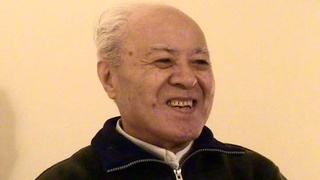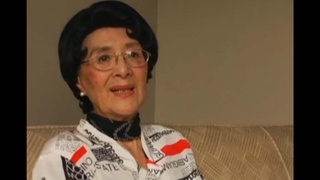Interviews
Feeling closer to Japan as a Japanese American
I think because of the fact that I could speak Japanese, I could read Japanese and write Japanese, when I was in Japan I felt somewhat closer to them than to the Americans. We had American partners, and belonged to the Tokyo American club, and there we associated with only Americans. But while associating and working with the Japanese and speaking Japanese with them, I felt very close and part of Japan. Not that I was Japanese but I felt fortunate that I was an American. That I was able to deal with the Japanese in their own term, which is their language. That was something that I felt very strongly because not knowing the language of a foreign country, the country you’re in, is a great, great disadvantage. That’s why the American partners in our firm were not that effective in Japan.
Date: May 29, 2006
Location: Hawai`i, US
Interviewer: Akemi Kikumura Yano
Contributed by: Watase Media Arts Center, Japanese American National Museum
Explore More Videos

Learning English upon discovering that family could not return to Peru
(1930-2018) Nisei born in Peru. Taken to the United States during WWII.

Her early life in Canada
(b.1912) Japanese Canadian Issei. Immigrated with husband to Canada in 1931

Japanese school
(b.1924) Japanese Canadian Nisei. Interpreter for British Army in Japan after WWII. Active in Japanese Canadian community

Strict school policy of separating boys and girls in Japan
(b.1920) Japanese Canadian Nisei. Established the Ikenobo Ikebana Society of Toronto

The reason for coming to Japan
(b. 1967) Hawai`i-born professional fighter in Japan

The Japanese society reacts to Nikkei living in Japan (Japanese)
Tsuda College President, researcher of Nikkei history

Learning Japanese at school and at home with family
(b.1951) Co-founder and managing director of San Jose Taiko.

Easier to be a foreigner in Japan (Spanish)
(b. 1969) Former president of Centro Nikkei Argentino.


To think in one language and live in another (Spanish)
Sansei Argentinean

Initial struggles with the language barrier (Japanese)
(b. 1917) Okinawan, Issei Argentinean



Working tirelessly after the war (Japanese)
(1928 - 2008) Drafted into both the Japanese Imperial Army and the U.S. Army.

A Lifestyle Using Both Japanese and Spanish (Japanese)
(b. 1929) President of Amano Museum
